A Beautiful Defense of Marriage
Offering a new perspective to the cynical By: Rick Langer

Boards and Thistles is the name of a photograph. That is remarkable in itself because most photographs are not named. It is all the more remarkable because of how unremarkable the photograph is. It is a picture of some boards and thistles. Go figure.
It would appear to be a broken-down fence or perhaps the side of a decrepit barn with a healthy crop of thistles growing at its base. Not the sort of scene that makes you say, “Look at that!”
But if you look again, it becomes more striking. The picture is almost tactile. You are drawn to reach out and touch it. I confess, when I first saw it in a book of photographs I flipped right by it, but then I flipped back. And flipped back again. Finally I found myself just staring at the lines and shapes and textures.
I am not alone in my admiration. This picture, an early photograph by Ansel Adams, recently sold at auction for $28,000. Given its condition, I imagine you could have bought the barn for less.
Jagged Splinters
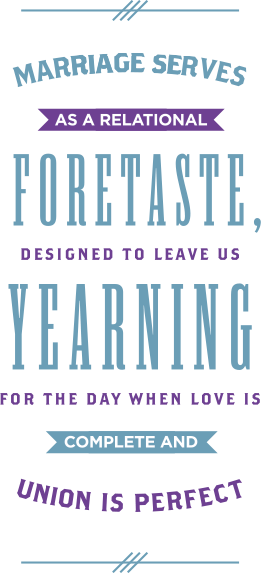

The common perception of marriage today is that it is boards and thistles. It is worn out, broken, patched together, slightly crooked and generally neglected. Those who pass by shake their head and long for the good old days when the boards were firmly nailed and freshly painted and the thistles were relentlessly plucked from the surrounding lawn.
Last year, actress Cameron Diaz struck a chord when she called marriage a dying institution, adding that we should not live our lives “based off old traditions that don’t suit our world any longer.”
Dr. Keith Ablow, a psychiatrist who blogs for FoxNews.com, took the opportunity to pile on. He bluntly stated that marriage never suited most people, noting that, “from what I hear in my psychiatry office . . . most marriages end either in divorce or acrimony, marriage is a source of real suffering for the vast majority of married people.”
Warming to the topic, he went on:
“I would venture that 90 percent of the married patients I speak with would rank their marriages in the top two stressors in their lives . . . . As a healer, I can’t help looking askance at anything that depletes energy, optimism, mood and passion to the extent that marriage does. It is, without a doubt, one of the leading causes of major depression in the nation.”
But such quotable quotes are less eloquent than the sighs and sobs of the quiet, nameless multitude into whose hearts have plunged the jagged splinters of the weathered boards of marriage.
I think of the young woman in our congregation who discovered her husband’s habit of slipping out late at night to seek prostitutes. At the end of our tearful conversation, I discovered she had driven to the church with her car packed full of all her worldly possessions and was not planning to return to her apartment.
I think of the students in my classes and at my church who come from broken homes. Their parents haven’t just split; their parents have split and split and split again. I remember trying to arrange a greeting line for the wedding of two young people who came from such families. I couldn’t give the wedding coordinator a list of names; I had to give her an organizational chart. They didn’t have a family tree; they had a family jungle.
I think of the 60 percent of couples in America who are co-habiting before they marry1. In the late 1960s, that number was closer to 10 percent2.
In Western Europe, a region that has preceded North America down the road to neglected marriage, couples are not necessarily co-habiting before marriage. They are co-habiting without marriage. Their attitude toward marriage is, “Why bother?”
So what is to be said on behalf of marriage? Perhaps it is just an institution from another time and another place meant for people of another time and place.
But perhaps it is worth looking again. Let me attempt to play the role of Ansel Adams on behalf of marriage and try to frame the picture in a way that might help us look again.
Why Marriage Matters
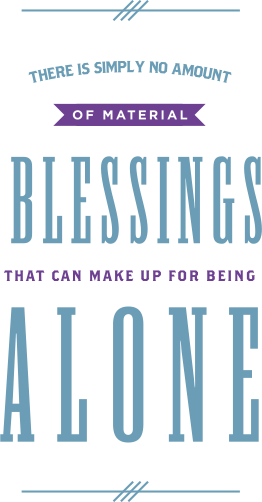

First, I have a few words for Dr. Ablow. If 90 percent of his patients find marriage among the top two stressors in their lives, I would like to venture a guess about the other stressor. I bet it was finances. A 2011 study by the American Psychological Association found money to be the No. 1 source of stress, followed by work and the economy3. Stress from our relationships with spouse, kids or boyfriend/girlfriend came in fourth.
But if money is our No. 1 source of stress, this hardly means money is a dying institution that no longer fits our world. Rather, it shows that money matters to people because people stress over things that matter. Likewise with marriage. If marriage and money are our top two stressors, it probably just means that relationships and material well-being are two of the things people care most about.
But that does raise an interesting question: Why is marriage so important to us?
Part of the reason may be companionship. In a pure and untarnished creation, Adam was free to enjoy every conceivable blessing of the material world. He had no fear of the animals he was naming; he had no worry about his next meal. He was surrounded by material abundance and was enjoying perfect physical health.
But nonetheless, when God looked at Adam, he saw the first thing in all of creation that was declared, “Not good!” The problem was not Adam, the problem was Adam alone. There is simply no amount of material blessings that can make up for being alone.
And his brief naming trip to the Edenic zoo confirmed the fact that not just any companionship would do. No matter how big his menagerie, Adam was still doomed to be alone. He needed a peer and a partner, not a parakeet; he needed a helper “fit for him.”
Tha's Real Good
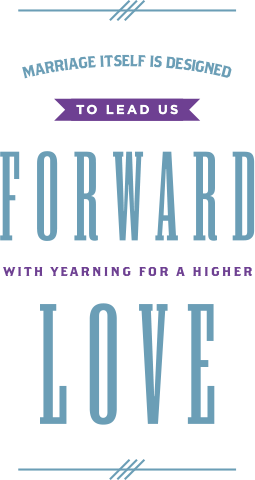

And so God gave the first gift: a companion wrapped in a covenant. God gave Eve, and man became man and woman; God gave a covenant, and man and woman became husband and wife. And it was very good and continues to be good countless centuries later.
One of my favorite stories of marital companionship is told by J. Robertson McQuilkin, former president of Columbia International University. He describes going for a walk with his wife in their waning years of marriage.
Muriel . . . wasn’t too sure on her feet, so we went slowly and held hands as we always do. This day I heard footsteps behind me and looked back to see the familiar form of a local derelict behind us. He staggered past us, then turned and looked us up and down. “Tha’s good. I likes ‘at,” he said. “Tha’s real good. I likes it.” He turned and headed back down the street, mumbling to himself over and over, “Tha’s good. I likes it.”4
“Tha’s good. I likes it.” It is not elegant language, but it is eloquent praise. Even a slightly inebriated passerby could recognize the beautiful companionship of two aged people, holding hands and supporting each other till death do them part.
It is enacted countless times every day by elderly couples all over the world. But most of us do not even see the beauty. We grumble and complain about the old couple blocking the aisle in front of us. I know. I just did so the other day. I am humbled by the town derelict who sees the same scene and has the wisdom to look again and admire the beauty of marital companionship.
Of course, marriage is not the only place in which we find companionship. Our souls are nourished through relationships, whether we are married or single. And marriage is only the companionship of two flawed people, living in decaying bodies in a fallen world. The covenantal union of marriage does not create heaven on earth. At its very best, it serves as a relational foretaste, designed to leave us longing for more and yearning for the day when love is complete and union is perfect. Not an exalted and purified love of husband and wife, but the transcendent love of God for His people.
Marriage itself is designed to lead us forward with yearning for a higher love that is more enduring than the stars and deeper than the seas.
Marriage Matters To The Kids
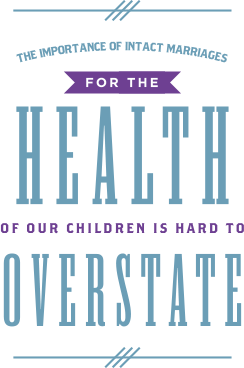

Another reason marriage is so important to us is that its companionship includes a lot more than just holding hands. Husband and wife become one flesh. God designed sex to foster deep emotional bonds that unite husband and wife. The delight of this experience is celebrated in many parts of Scripture and especially in the Song of Solomon. And it often, usually, leads to children.
The importance of intact marriages for the health of our children is hard to overstate. Though it is certainly true that healthy and happy children emerge from other family structures, it is far more difficult for all involved. And the benefits of growing up in an intact home with two biological parents are both broad and deep.
This was confirmed in a 2011 Why Marriage Matters study—an extensive survey by 18 leading marriage and family researchers from across the country5. Among its many conclusions about the benefits of marriage is that “the intact, biological, married family remains the gold standard for family life in the United States. Children are most likely to thrive, economically, socially, and psychologically, in this family form.”
Polishing Our Rough Edges
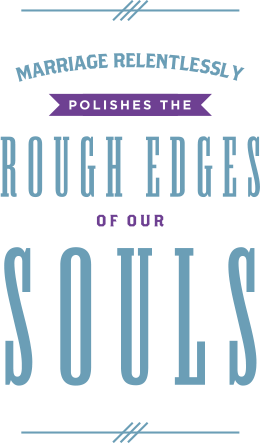

The last reason I will suggest for the importance of marriage is that marriage demands that we become better people. It relentlessly polishes the rough edges of our souls. It reveals our weaknesses but also provides a setting for the very best of human virtues to shine through.
I recently read about B.B. Warfield, the famous Princeton theologian. On his honeymoon, he was trapped with his wife in a terrible storm. She was traumatized so severely that she became an invalid. They had no children, and Warfield cared for her for the rest of their lives.
One of Warfield’s great legacies was not just his vast theological output but the indelible impression he left on his students, who would see him walking his wife slowly about the seminary campus. He was renowned for gentle and caring devotion to her.
I mentioned J. Robertson McQuilkin earlier but did not explain his circumstances. He was serving as president of Columbia International University when his wife was diagnosed with early onset Alzheimer’s disease. Within two years, she had deteriorated to the point that a critical decision had to be made: Would he continue his career or tend to his wife full time?
In his resignation speech to the university, he said it was an easy decision: ”Muriel now, in the last couple of months, seems to be almost happy when with me, and almost never happy when not with me. In fact, she seems to feel trapped, becomes very fearful, sometimes almost terror, and when she can’t get to me there can be anger. . . . But when I’m with her she’s happy and contented, and so I must be with her at all times. . . . It’s not only that I promised in sickness and in health, ‘till death do us part, and I’m a man of my word. . . . It’s the only fair thing. She sacrificed for me for forty years, to make my life possible . . . so if I cared for her for forty years, I’d still be in debt. . . . It’s not that I have to. It’s that I get to. . . . She’s a delight. And it’s a great honor to care for such a wonderful person.“6
As I hear such stories I’m impressed at the lofty heights to which human character can climb. Generally we only climb to such heights when necessity demands. Marriage vows often converge with life circumstances to create such necessity. Marriage is a crucible for forging character. It may not always be a source of happiness, but it is always a source of meaning.
The Beauty of Marriage

When I think of stories like those of Warfield and McQuilkin, I am reminded of Boards and Thistles all over again. They call to mind an image of marriage that is at once weathered and worn, but also beautiful and significant.
Even if Dr. Ablow is compelled to look askance at marriage because of the dark side he hears in his counseling office, I cannot help but think he needs to look again. Perhaps he will one day find himself behind an elderly couple shuffling along as they cling to each other’s hands as tightly as they cling to the vows they made so many years before.
If he looks long and hard, who knows, he might even find himself whispering, “Tha’s real good. I likes it.”
A Beautiful Defense of Marriage
BOARDS AND THISTLES is the name of a photograph. That is remarkable in itself because most photographs are not named. It is all the more remarkable because of how unremarkable the photograph is. It is a picture of some boards and thistles. Go figure.
It would appear to be a broken-down fence or perhaps the side of a decrepit barn with a healthy crop of thistles growing at its base. Not the sort of scene that makes you say, “Look at that!”
But if you look again, it becomes more striking. The picture is almost tactile. You are drawn to reach out and touch it. I confess, when I first saw it in a book of photographs I flipped right by it, but then I flipped back. And flipped back again. Finally I found myself just staring at the lines and shapes and textures.
I am not alone in my admiration. This picture, an early photograph by Ansel Adams, recently sold at auction for $28,000. Given its condition, I imagine you could have bought the barn for less.
Jagged Splinters
Marriage serves as a relational foretaste
THE COMMON PERCEPTION OF MARRIAGE today is that it is boards and thistles. It is worn out, broken, patched together, slightly crooked and generally neglected. Those who pass by shake their head and long for the good old days when the boards were firmly nailed and freshly painted and the thistles were relentlessly plucked from the surrounding lawn.
Last year, actress Cameron Diaz struck a chord when she called marriage a dying institution, adding that we should not live our lives “based off old traditions that don’t suit our world any longer.”
Dr. Keith Ablow, a psychiatrist who blogs for FoxNews.com, took the opportunity to pile on. He bluntly stated that marriage never suited most people, noting that, “from what I hear in my psychiatry office … most marriages end either in divorce or acrimony, marriage is a source of real suffering for the vast majority of married people.”
Warming to the topic, he went on:
“I would venture that 90 percent of the married patients I speak with would rank their marriages in the top two stressors in their lives … . As a healer, I can’t help looking askance at anything that depletes energy, optimism, mood and passion to the extent that marriage does. It is, without a doubt, one of the leading causes of major depression in the nation.”
But such quotable quotes are less eloquent than the sighs and sobs of the quiet, nameless multitude into whose hearts have plunged the jagged splinters of the weathered boards of marriage.
I think of the young woman in our congregation who discovered her husband’s habit of slipping out late at night to seek prostitutes. At the end of our tearful conversation, I discovered she had driven to the church with her car packed full of all her worldly possessions and was not planning to return to her apartment.
I think of the students in my classes and at my church who come from broken homes. Their parents haven’t just split; their parents have split and split and split again. I remember trying to arrange a greeting line for the wedding of two young people who came from such families. I couldn’t give the wedding coordinator a list of names; I had to give her an organizational chart. They didn’t have a family tree; they had a family jungle.
I think of the 60 percent of couples in America who are co-habiting before they marry1. In the late 1960s, that number was closer to 10 percent (2).
In Western Europe, a region that has preceded North America down the road to neglected marriage, couples are not necessarily co-habiting before marriage. They are co-habiting without marriage. Their attitude toward marriage is, “Why bother?”
So what is to be said on behalf of marriage? Perhaps it is just an institution from another time and another place meant for people of another time and place.
But perhaps it is worth looking again. Let me attempt to play the role of Ansel Adams on behalf of marriage and try to frame the picture in a way that might help us look again.
Why Marriage Matters
No amount of material blessing can make up for being alone
FIRST, I HAVE A FEW WORDS FOR DR. ABLOW. If 90 percent of his patients find marriage among the top two stressors in their lives, I would like to venture a guess about the other stressor. I bet it was finances. A 2011 study by the American Psychological Association found money to be the No. 1 source of stress, followed by work and the economy3. Stress from our relationships with spouse, kids or boyfriend/girlfriend came in fourth.
But if money is our No. 1 source of stress, this hardly means money is a dying institution that no longer fits our world. Rather, it shows that money matters to people because people stress over things that matter. Likewise with marriage. If marriage and money are our top two stressors, it probably just means that relationships and material well-being are two of the things people care most about.
But that does raise an interesting question: Why is marriage so important to us?
Part of the reason may be companionship. In a pure and untarnished creation, Adam was free to enjoy every conceivable blessing of the material world. He had no fear of the animals he was naming; he had no worry about his next meal. He was surrounded by material abundance and was enjoying perfect physical health.
But nonetheless, when God looked at Adam, he saw the first thing in all of creation that was declared, “Not good!” The problem was not Adam, the problem was Adam alone. There is simply no amount of material blessings that can make up for being alone.
And his brief naming trip to the Edenic zoo confirmed the fact that not just any companionship would do. No matter how big his menagerie, Adam was still doomed to be alone. He needed a peer and a partner, not a parakeet; he needed a helper “fit for him.”
Tha’s Real Good
Marriage is designed to lead us forward
AND SO GOD GAVE THE FIRST GIFT: a companion wrapped in a covenant. God gave Eve, and man became man and woman; God gave a covenant, and man and woman became husband and wife. And it was very good and continues to be good countless centuries later.
One of my favorite stories of marital companionship is told by J. Robertson McQuilkin, former president of Columbia International University. He describes going for a walk with his wife in their waning years of marriage.
Muriel … wasn’t too sure on her feet, so we went slowly and held hands as we always do. This day I heard footsteps behind me and looked back to see the familiar form of a local derelict behind us. He staggered past us, then turned and looked us up and down. “Tha’s good. I likes ‘at,” he said. “Tha’s real good. I likes it.” He turned and headed back down the street, mumbling to himself over and over, “Tha’s good. I likes it.” (4)
“Tha’s good. I likes it.” It is not elegant language, but it is eloquent praise. Even a slightly inebriated passerby could recognize the beautiful companionship of two aged people, holding hands and supporting each other till death do them part.
It is enacted countless times every day by elderly couples all over the world. But most of us do not even see the beauty. We grumble and complain about the old couple blocking the aisle in front of us. I know. I just did so the other day. I am humbled by the town derelict who sees the same scene and has the wisdom to look again and admire the beauty of marital companionship.
Of course, marriage is not the only place in which we find companionship. Our souls are nourished through relationships, whether we are married or single. And marriage is only the companionship of two flawed people, living in decaying bodies in a fallen world. The covenantal union of marriage does not create heaven on earth. At its very best, it serves as a relational foretaste, designed to leave us longing for more and yearning for the day when love is complete and union is perfect. Not an exalted and purified love of husband and wife, but the transcendent love of God for His people.
Marriage itself is designed to lead us forward with yearning for a higher love that is more enduring than the stars and deeper than the seas.
Marriage Matters To The Kids
ANOTHER REASON MARRIAGE IS SO IMPORTANT TO US is that its companionship includes a lot more than just holding hands. Husband and wife become one flesh. God designed sex to foster deep emotional bonds that unite husband and wife. The delight of this experience is celebrated in many parts of Scripture and especially in the Song of Solomon. And it often, usually, leads to children.
The importance of intact marriages for the health of our children is hard to overstate. Though it is certainly true that healthy and happy children emerge from other family structures, it is far more difficult for all involved. And the benefits of growing up in an intact home with two biological parents are both broad and deep.
This was confirmed in a 2011 Why Marriage Matters study—an extensive survey by 18 leading marriage and family researchers from across the country5. Among its many conclusions about the benefits of marriage is that “the intact, biological, married family remains the gold standard for family life in the United States. Children are most likely to thrive, economically, socially, and psychologically, in this family form.”
Polishing Our Rough Edges
THE LAST REASON I WILL SUGGEST for the importance of marriage is that marriage demands that we become better people. It relentlessly polishes the rough edges of our souls. It reveals our weaknesses but also provides a setting for the very best of human virtues to shine through.
I recently read about B.B. Warfield, the famous Princeton theologian. On his honeymoon, he was trapped with his wife in a terrible storm. She was traumatized so severely that she became an invalid. They had no children, and Warfield cared for her for the rest of their lives.
One of Warfield’s great legacies was not just his vast theological output but the indelible impression he left on his students, who would see him walking his wife slowly about the seminary campus. He was renowned for gentle and caring devotion to her.
I mentioned J. Robertson McQuilkin earlier but did not explain his circumstances. He was serving as president of Columbia International University when his wife was diagnosed with early onset Alzheimer’s disease. Within two years, she had deteriorated to the point that a critical decision had to be made: Would he continue his career or tend to his wife full time?
In his resignation speech to the university, he said it was an easy decision: ”Muriel now, in the last couple of months, seems to be almost happy when with me, and almost never happy when not with me. In fact, she seems to feel trapped, becomes very fearful, sometimes almost terror, and when she can’t get to me there can be anger… . But when I’m with her she’s happy and contented, and so I must be with her at all times… . It’s not only that I promised in sickness and in health, ‘till death do us part, and I’m a man of my word… . It’s the only fair thing. She sacrificed for me for forty years, to make my life possible … so if I cared for her for forty years, I’d still be in debt… . It’s not that I have to. It’s that I get to… . She’s a delight. And it’s a great honor to care for such a wonderful person.“6
As I hear such stories I’m impressed at the lofty heights to which human character can climb. Generally we only climb to such heights when necessity demands. Marriage vows often converge with life circumstances to create such necessity. Marriage is a crucible for forging character. It may not always be a source of happiness, but it is always a source of meaning.
The Beauty of Marriage
WHEN I THINK OF STORIES like those of Warfield and McQuilkin, I am reminded of Boards and Thistles all over again. They call to mind an image of marriage that is at once weathered and worn, but also beautiful and significant.
Even if Dr. Ablow is compelled to look askance at marriage because of the dark side he hears in his counseling office, I cannot help but think he needs to look again. Perhaps he will one day find himself behind an elderly couple shuffling along as they cling to each other’s hands as tightly as they cling to the vows they made so many years before.
If he looks long and hard, who knows, he might even find himself whispering, “Tha’s real good. I likes it.”
1 “Move-in Before Marriage No Longer Predicts Divorce,” by Mike Stobbe, huffingtonpost.com, March 22, 2012. 2 Ibid. 3 “Stress in America: Our Health at Risk,” American Psychological Association, January 11, 2012, p. 17. 4 “Muriel’s Blessing,” by Robertson McQuilkin, Christianity Today, February 2004 (web-only edition). 5 “Why Marriage Matters: Thirty Conclusions from the Social Sciences,” 2011 report, Institute of American Values, University of Virginia, pp. 12-13. 6 “As Long as We Both Shall Live: Experiencing the marriage you’ve always wanted,” by Gary Smalley and Ted Cunningham, Regal, 2009, p. 210.
Rick Langer lives in Redlands, Calif., and is a professor of biblical studies and theology at Biola University, and director of its Office of Faith and Learning. He and his wife, Shari, have been married for more than 30 years and have two grown children.